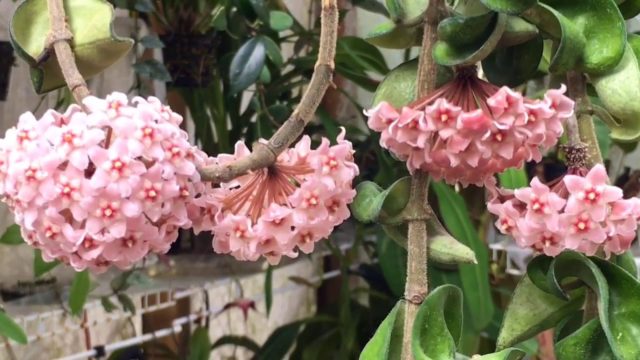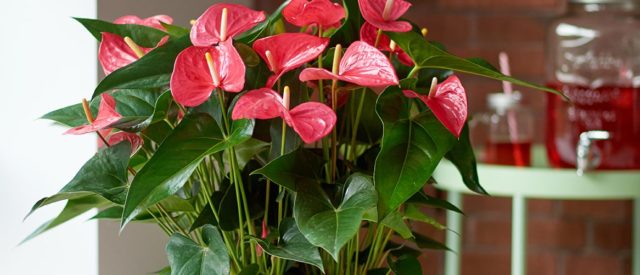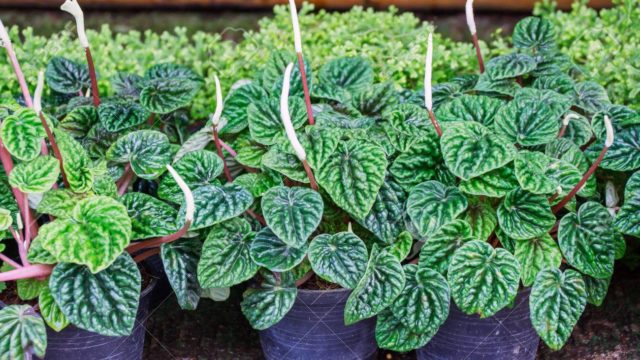10 Beautiful & Unique Indoor House Plants That Are Super Easy to Take Care Of
4. Hoya
The Hoya plant is actually a vine that is best known for its waxy, thick leaves, which give is where the plant gets its other name “the wax plant”. It features clusters of small, star-shaped flowers that come in pink or white with red centers. The foliage looks its best when it droops over the side of a hanging pot or when it’s trained to grow along a trellis.
The Hoya plant is pretty easy to care for since it does not need direct sunlight. But it does need about 6 hours of indirect sunlight per day and you might need to rotate it about 2-3 times per year if only one side is being exposed to it. It thrives in areas of high humidity and in relatively high temperatures.

5. Anthurium
If you’re looking for a flowering indoor plant to brighten up your living room, you can go with some anthuriums. Although the natural color of an anthurium is red, hybrid varieties in shades of pink, lavender, and even green are now widely available.
This plant doesn’t require direct sunlight, but do place it somewhere that is bright. It requires very little water as well. But be careful to put it somewhere that’s out of reach from children because the pretty heart-shaped leaves of this “flamingo flower” contains toxic sap.

6. Peperomia
With gorgeous waxy leaves that vary in shape from heart-like to narrow and in color from green, red, or silver-gray – you won’t even miss the flowers with a plant like Peperomia. But little rat-tail like flowery spikes may also appear once in a while.
Some of the most common varieties of the plant include watermelon, red-edge, and ripple peperomias. These plants are pretty small and tolerate low light, so they can be used in endless applications. You can place them on your table, countertop, windowsill, or even as a part of a terrarium!

7. Shamrock Plant
Cute white flowers standing on tall stems sit amongst bright green leaves shaped like shamrocks, which is where the plant gets its name.
Taking care of the shamrock plant is pretty easy, because it only requires you to water it about once or twice a week once the soil has dried out completely. It fares best when placed in an area with regular room temperature, good air circulation, and bright indirect sunlight.

You May Like
-

12 Car Cleaning Tricks Local Dealers Don’t Want You to Know
-

14 Cancer Symptoms You Are Most Likely To Ignore
-

12 Surprising Benefits Lemons Can Do for You
-

17 Cancer Causing Foods You Have To Stop Eating
-

7 Reasons Why You Should Sleep On Your Left Side
-

9 Things You Didn’t Know Coca-Cola Could Do
-

8 Early Warning Signs of Throat Cancer You Need to Know!
-

15 Best Dog Breeds For Seniors
-

12 Things That Happen To Your Body When You Eat Eggs




